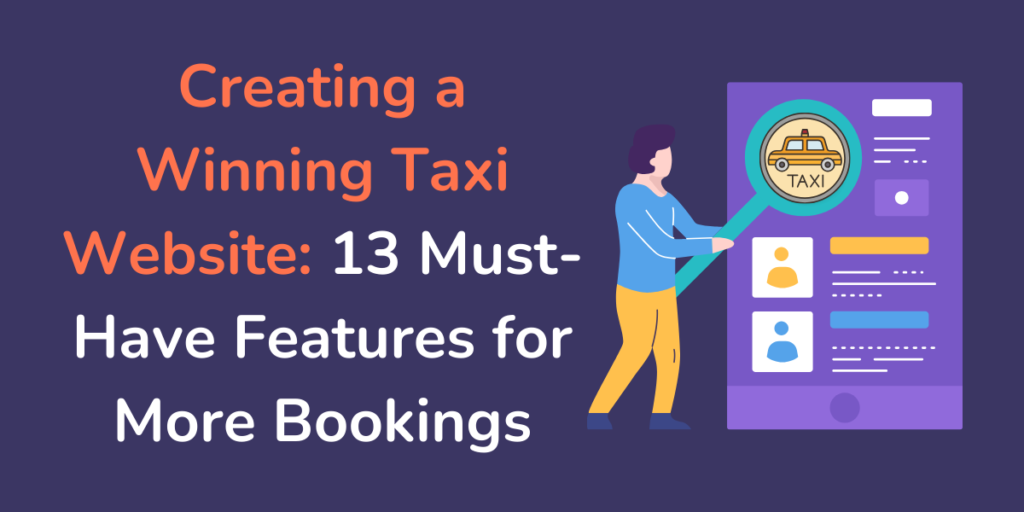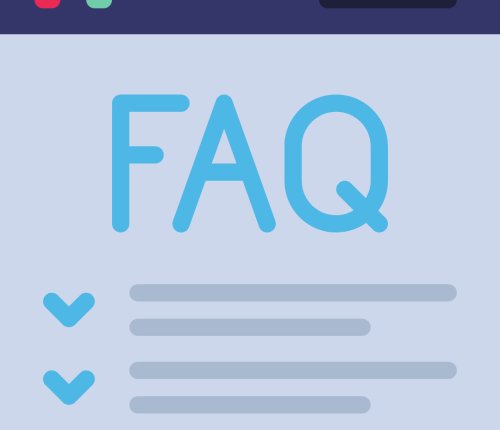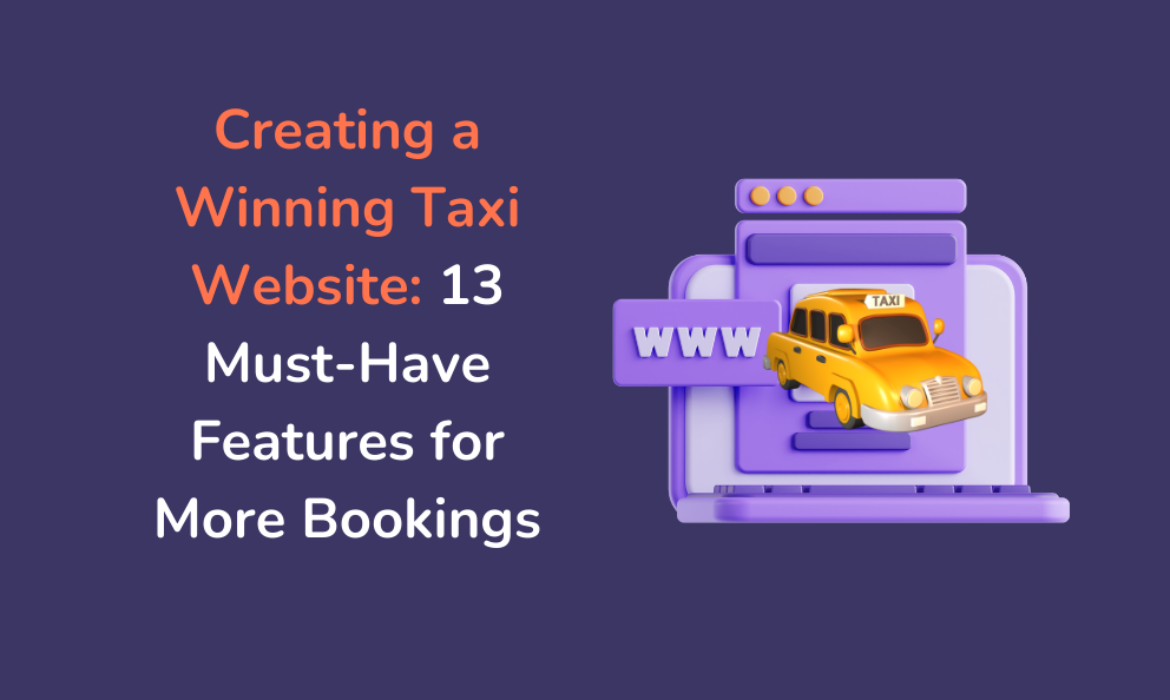Last Updated: August 25, 2025

In the taxi business, having a great website can make a big difference. We have the privilege of working closely with multiple taxi and cab businesses, helping them not only survive but thrive. Today, we are excited to share a comprehensive guideline on building a high-performance taxi business website that will consistently generate leads and bookings.
1. Booking System:

Your website’s booking system is the heart of your online presence. Booking system should be super simple for customers. Here is what you need to have in the booking system:
- An easy-to-use online booking form.
- Let customers pick the kind of car they want (like sedans, SUVs, or luxury cars).
- Allow them to choose a date and time for their ride.
- Show them real-time availability and estimates for fares.
2. Fare Calculator & Clear Pricing

Ensure that your pricing is crystal clear. Implement a fare calculator that calculates the cost based on the distance and destination. Display rates for different vehicle types to avoid any surprises.
Mention extra charges if applicable such as parking charges, toll charges, taxes, etc in the fare calculator.
3. User Registration and Profile Management

User accounts are a significant convenience factor. Offer user registration for both passengers and drivers, enabling them to save their information and preferences.
You can use any good fleet management software as well to manage users & drivers.
4. Payment gateway Integration with Booking Form
Integrate payment gateway to your booking form for the customers to make online payment. Payment gateway should accept payments from credit cards, debit cards, Netbanking & digital wallets.
Here is a surprising secret for you. From our experience working with numerous taxi businesses, cash booking is the game changing option. We have seen an increase in bookings with around 30% with cash booking.
5. Notification System
Once the booking is made and confirmed, your website should send an automated email notification to the users regarding booking confirmation, driver details and their journey details.
On the day of journey, when you dispatch the taxi you should send vehicle number, driver details as a notification to the customer. This will improve customer experience massively and they will be updated on the real time. You can accomplish this by using any fleet management software.
6. Reviews and Ratings

Establish a mechanism to take reviews from the customer. Share Google my business or trust pilot link with a well crafted message to take reviews from the satisfied customers.
Embed the reviews from Google My Business or trust pilot to your website which will build trust and credibility.
7. Driver Information

Create driver profiles with their pictures and reviews. It helps passengers feel more comfortable and safety . It will provide a level of transparency that can make all the difference in building trust with your passengers.
8. Mobile-Friendly Design

In today’s mobile-driven world, it is necessary that your website is not just responsive but optimised for mobile users. Most of the customers are going to book a taxi from a mobile device. Check your website performance in different browsers like Safari, Chrome, Internet Explorer, etc. Make sure every functionality is working as expected in cross browsers. (Do you want to say across browsers or cross browsers is a technical term? If it is then no changes are needed.)
9. Contact Information

Make your contact details visible at the key places.Include phone number, email and address for customer support.
Add a Whatsapp chat option on your website. Working with so many taxi businesses we have noticed that customers request pricing on Whatsapp. It’s a favoured communication method for younger customers who prefer chatting rather than to call.
10. FAQ Section

Frequently Asked Questions (FAQ) are a valuable addition to your website. Cover common queries such as pricing, parking charges, distances, meet and greet services, and baby seat availability.
11. Feedback and Contact Forms

Encourage user engagement with feedback forms for suggestions feedback.
Additionally, in the contact us page you should contact forms for leads and potential business partnerships.
Make sure feedback form and contact form is protected with captcha in order to avoid spam emails and leads.
12. Blog Section

Enhance your website’s SEO and user engagement by maintaining a blog. Publish content related to local events, travel tips and news within your service area. This not only improves your website’s search engine ranking but also keeps users coming back for valuable insights. Check our local SEO blog for the tips of creating content for local events.
13. Legal Information
Display essential legal information, such as terms and conditions, privacy policies, refund policies and GDPR compliance details. This helps build trust and transparency with your customers.
Incorporating these 13 essential features into your taxi business website can significantly enhance your online presence and customer engagement. By offering a user-friendly experience and comprehensive information, you’ll be well on your way to generate consistent leads and bookings.
Author Bio:

Sambhav Shah is a seasoned digital marketer with over 8 years of experience, specializing in helping taxi and cab businesses thrive in the online world. His expertise has empowered numerous companies to boost their leads and bookings, making their mark in the competitive transportation industry.


